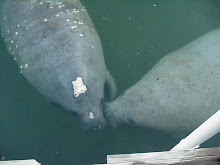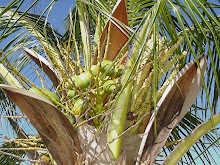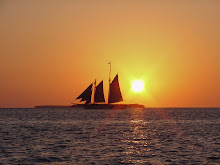
Two centuries ago all of Florida was a wilderness. It was home to a few white settlers, a few thousand Seminole Indians (
The Seminoles began as groups of different Native Americans, mostly Creeks from Georgia and Alabama, who settled in Florida in the early 18th century. The word Seminole is a corruption of the Spanish word Cimarron
, which means "runaway" or "wild one" which the Spanish gave the local Indians when Florida was under Spanish rule) and escaped slaves who were given refuge by the Seminoles. Some of the Indians and escaped slaves married and became families, thus creating a group of people known as Black Seminoles.
The slave catchers came into Spanish owned Florida in 1818, and Andrew Jackson (who would later become the seventh U.S. president) and the Regular Army, under orders to subdue the Seminoles, invaded Florida as well and attacked a Negro fort and later Indian villages. This began the First Seminole War.
The following year Spain sold Florida to the United States. More white settlers came and so did more escaped slaves. The white settlers wanted the land the Indians and blacks lived on. When the Seminoles and blacks began to resist, the white settlers called on the U.S. government for help. Soldiers came and built forts. They also told the Seminoles they must leave Florida, it was no longer their home.
Fort Brooke (today's Tampa) was one of the forts built. Tensions were extremely high in Florida years later when Major Dade and 108 men marched out of Ft. Brooke in late December of 1835. They were marching 100 miles north to help reinforce Ft. King (present day Ocala).
Dade and his men were marching with a single cannon. They were wary of a possible attack, and by December 28th they had emerged from the thick swamps along their route and were marching through fairly open pine lands.



The day was very cold and the men were wearing heavy coats over their weapons. Major Dade and an advance guard were slightly ahead of the main column and the soldiers had no scouts out on their flanks.
The men felt more relaxed now that they had emerged from the thickets and swamps.
"Have a good heart; our difficulties and dangers are over now," said Major Dade to his men.
He then promised them a three day Christmas rest when they reached Fort King, as suddenly a shot rang out.
Unknown to Dade and his men, they had been watched for days since they left Fort Brooke and were now walking into an ambush laid by around 200 Seminole warriors led by leaders Micanopy, Jumper and Alligator.
"We had been preparing for this more than a year," said Alligator.
Following the single shot, the Seminoles opened fire from the cover of palmetto and high grass.

Major Dade, his horse and roughly half of the column went down in the first volley. Fifteen rounds were fired by the Seminoles before the soldiers ever saw a warrior.
The Warriors swarmed forward but were driven back by cannon fire.This caused a pause in the battle and the soldiers were able to regroup.

With the break in the fighting, the soldiers took advantage of the time by felling trees and building a triangular breastwork of logs. It was only about three logs high when the Seminoles began their attack again.

 Archaeologists later found piles of flattened rifle balls at the site of the log breastworks on the grounds of the Dade Battlefield Historic State Park in Bushnell, Florida.
Archaeologists later found piles of flattened rifle balls at the site of the log breastworks on the grounds of the Dade Battlefield Historic State Park in Bushnell, Florida.
The battle continued.


 When the smoke cleared, virtually all the soldiers were dead. Dade, his officers and 103 soldiers were killed.
When the smoke cleared, virtually all the soldiers were dead. Dade, his officers and 103 soldiers were killed.



Four soldiers, all badly wounded, survived the attack. Two of the survivors made their way back to Fort Brooke and arrived to tell of the battle and another reached the fort before dying. The last survivor was killed by Indians before he made it to Ft. Brooke. Dade's interpreter, Louis Pacheco was either captured by or voluntarily left with the Seminoles.
The attack and destruction of Dade's command is what sparked the Second Seminole War. It was the longest and costliest Indian War in U.S. history. The war would last seven years, claim thousands of lives, cost thirty million dollars and force the removal of virtually all Seminoles to Oklahoma.
On the first day of 2011, The Colonel, Yam, Spud and I watched the 31st reenactment of Dade's Battle. The reenactment was held on the grounds of the Dade Battlefield Historic State Park in Bushnell, Florida.
This reenactment was held on the 175th anniversary of the Second Seminole War (there would be one more) and on the site where the battle was fought almost two hundred years ago.
We met up with one of Yam's college friends and her mother who live in Bushnell. We all agreed that this was an impressive reenactment. We had front row seats, sitting on the grass, behind the yellow rope that separated the viewers from the reenactors. We felt like we were in the middle of the action and that we were actually taken back in time and space 175 years.
Before the battle reenactment and before we met up with Yam's friend and her mother, we walked the grounds. We saw the soldiers' and Seminoles' camps.


We also saw the descendants of Black Seminoles.

This breastwork reconstruction below is built upon the site of the original breastwork that Dade's soldiers built in 1835. This is where the flattened rifle balls were found.
Our trip to Bushnell was two-fold; one of business and pleasure. The museum we volunteer for will be doing an exhibit on the Seminole Wars next season which will highlight Black Seminoles. This trip gave us information and plenty of photos we can use for the exhibit plus, the whole family loves experiencing historical reenactments like this one that bring history to life.
There are a few more Seminole War reenactments around Florida in the next couple of months...we'll be attending those too (minus Yam, she'll be back at college).
When we first arrived at the Dade Battlefield Historic State Park, I took some pictures of the reenactors. One reenactor was dressed as a Seminole warrior (before I took his picture I informed him that my camera would not steal his soul) and after I took his picture I thanked him and said goodbye. He told me the Seminole people do not have a word for goodbye and that the word goodbye suggests that the person you say it to is going to die and you will never see them again.
So, with this knowledge in hand and with the power of Google, I leave you, my readers, with this saying in the Seminole language...
"Enka, Ce'hecares!"
Translation: "OK, I will see you again!"



 The day was very cold and the men were wearing heavy coats over their weapons. Major Dade and an advance guard were slightly ahead of the main column and the soldiers had no scouts out on their flanks.
The day was very cold and the men were wearing heavy coats over their weapons. Major Dade and an advance guard were slightly ahead of the main column and the soldiers had no scouts out on their flanks.
 With the break in the fighting, the soldiers took advantage of the time by felling trees and building a triangular breastwork of logs. It was only about three logs high when the Seminoles began their attack again.
With the break in the fighting, the soldiers took advantage of the time by felling trees and building a triangular breastwork of logs. It was only about three logs high when the Seminoles began their attack again.
 Archaeologists later found piles of flattened rifle balls at the site of the log breastworks on the grounds of the Dade Battlefield Historic State Park in Bushnell, Florida.
Archaeologists later found piles of flattened rifle balls at the site of the log breastworks on the grounds of the Dade Battlefield Historic State Park in Bushnell, Florida.

 When the smoke cleared, virtually all the soldiers were dead. Dade, his officers and 103 soldiers were killed.
When the smoke cleared, virtually all the soldiers were dead. Dade, his officers and 103 soldiers were killed.

 Four soldiers, all badly wounded, survived the attack. Two of the survivors made their way back to Fort Brooke and arrived to tell of the battle and another reached the fort before dying. The last survivor was killed by Indians before he made it to Ft. Brooke. Dade's interpreter, Louis Pacheco was either captured by or voluntarily left with the Seminoles.
Four soldiers, all badly wounded, survived the attack. Two of the survivors made their way back to Fort Brooke and arrived to tell of the battle and another reached the fort before dying. The last survivor was killed by Indians before he made it to Ft. Brooke. Dade's interpreter, Louis Pacheco was either captured by or voluntarily left with the Seminoles.
 We also saw the descendants of Black Seminoles.
We also saw the descendants of Black Seminoles.




































No comments:
Post a Comment